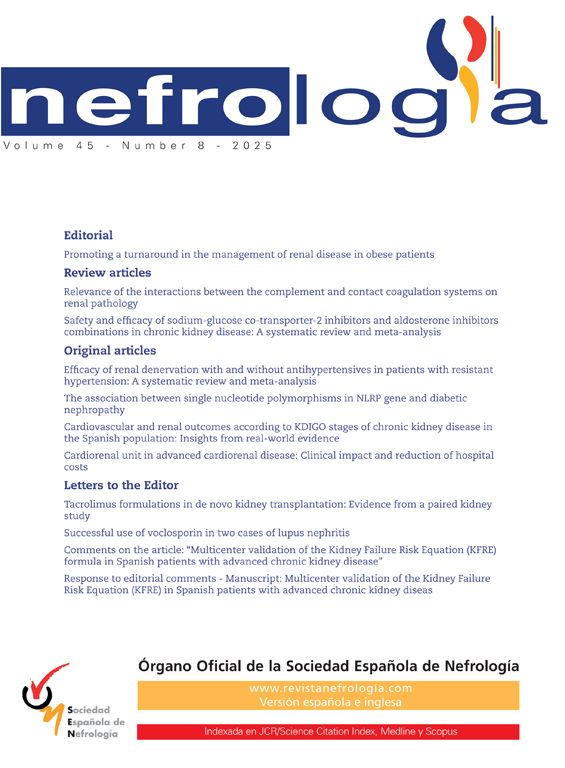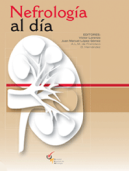The incomplete information that exists with respect to the diseases of the urinary tract that befell historical personages allows us to suspect the illnesses they suffered. This is the case of the presence of lithiasis in some members of the House of Austria.
Philip IV (1605–1665) died at the age of 60. The person in charge of the embalming was the chamber surgeon Antonio Oliver.1 A description of the royal illness and his death was written by Gaspar Bravo de Sobremonte (1603–1683), who was a professor at the University of Valladolid.2 This description was published in the Disputatio Apologetica pro Dogmaticae Medicinae praestantia.2 Some of these data have been collected in the “Historia bibliográfica de la medicina española”.3
Bravo wrote that death occurred “as a result of calculous nephritis.
In the last three years of his life, a stupor was first observed in the right arm and leg, which then extended [sic] to the left, and finally occupied both sides, leaving them almost paralytic; as a result of which came the tabes or universal sternutation [sic] of the whole body. In this state he continued three years before his death, and in these years he was presented with periodic dysuria, which became continuous, and accompanied first by nephritis, and then by a “mictus cruentus.”
The doctors consulted:
They prescribed a palliative cure; first, donkey's milk taken for ten days to delay the great consumption and tabes; in addition emollient topicals were applied to his loins to mitigate the great pains he was suffering […]. On the occasion of having to embalm the body, as the King complained of the right kidney, and had thrown much grit; and as after seeing the mictus cruentus, it was doubted whether it came from stone or ulcer in the kidney, so it was inspected, and found it very diminished with a stone uneven in parts, like a chestnut, which was enclosed in its parenchyma, the rest of this being corrupted and made pus.3
The calculus “resembles a chestnut in size and shape, rough, and with three unevennesses or eminences simply enclosed to its circumference, which protruded from the rest of its substance” .2
The interiors (the visceras) were buried in The convent San Gil of the Court
: in which objection was made for something remarkable, that the kidney on the right side, which was the one of the paresis, it was found half dry, and in poor condition, and next to it a stone like a chestnut, full of fleshy spikes, which seems to have broken some head of the main vein, and caused the of blood flows, which His Majesty expelled by both vias, and the internal pains he suffered.2
The term mictus cruentus is a Latin expression indicating hematuria. As Bravo wrote, it could come “from a stone or ulcer in the kidney”.
The description of the renal lesion found at necropsy matches that of a xanthogranulomatous pyelonephritis. This is a severe and rare type of chronic pyelonephritis in which urolithiasis and obstructive uropathy coincide, leading to severe destruction of the renal parenchyma. The situation is so difficult that it usually culminates in nephrectomy.4 The most common symptoms are flank pain, fever, dysuria, hematuria, palpable mass and weight loss. The first four of these symptoms were present in the current patient, the King. Occasionally, symptoms such as those originating from the creation of cutaneous or intestinal fistulous tracts are added.5 The existence of a fistula could explain “the flows of blood, that His Majesty expelled through both routes”.
Contrast-enhanced computed axial tomography may show the replacement of normal renal tissue by multiple hypoechoic areas corresponding to xanthogranulomatous inflammation of the renal calyces.6
With respect to other members of the house of Austria, in the necropsy of Charles II, son of Philip IV, a stone was found in the bladder.7 Without much foundation, it has been reported that he may have suffered from distal renal tubular acidosis.8 In addition, Charles I, great-grandfather of Philip IV, also had “difficulties in urination and “urine sickness”, the name by which kidney stones were known” 7; he suffered from gout9 and, therefore, hyperuricemia, which has been associated with hypercalciuria. The kings of the Spanish Habsburgo dynasty frequently married close relatives with the consequence of a high degree of consanguinity.8 The metabolic anomaly most frequently related to consanguinity is idiopathic hypercalciuria, which is very prevalent in island territories, including our island of La Gomera.10 Even considering the difficulty of retrospective diagnoses, we believe that King Philip IV presented a clinical picture compatible with xanthogranulomatous pyelonephritis. This is the first time this fact has been reported.





